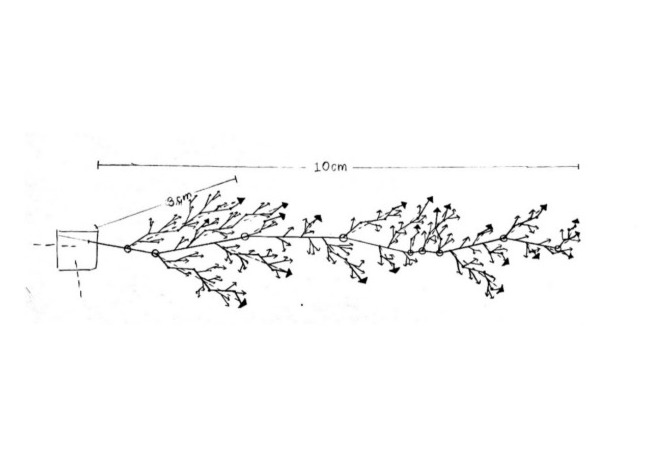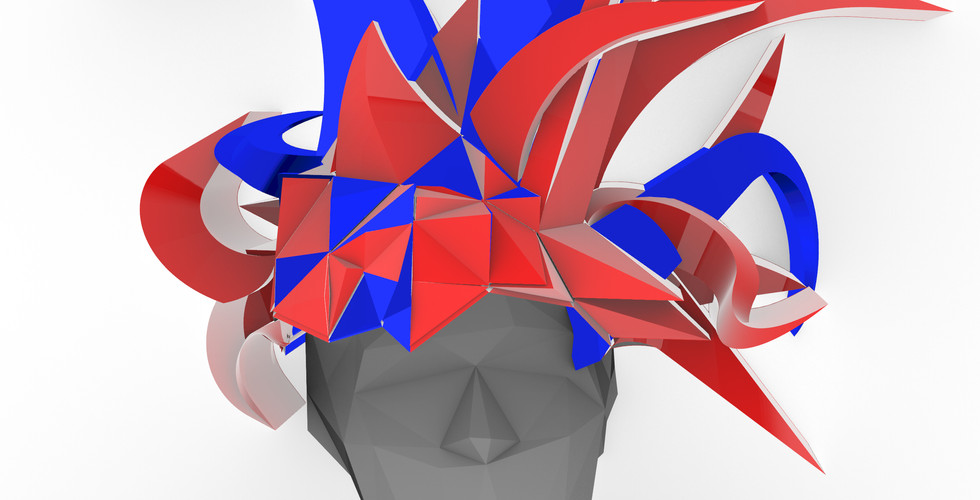Patterns
- Tanushree Bhagwat, Sanjeeta Patil and Harshita Patel
- Mar 5, 2022
- 4 min read
Studio Co-ordinators: Dushyant Asher, Milind Mahale, Tamal Mitra, Kaushik Mukhopadhyay, Shreyank Khemlapure, Vastavikta Bhagat
-Tanushree Bhagwat, Sanjeeta Patil and Harshita Patel
The module began with an outdoor study of air plants; majorly Epiphytes and Philodendrons and meticulously survey their botanical and organic features. It intended to study form by formations and initiate the study by decoding its logic of growth as opposed to an orthogonal platonic solid. This Decoding of the form happens through equations, codes, a set of matrices, or a series of geometric relationships and proportions.
Further, these decoded forms established multiple fragments of individual relationships to recognize the formation. The process opens up the logic of formation, moving beyond understanding form only by orthogonal drawing methods. This study involved the making of diagrams and structurally patterned drawings that provided a basis for the students to derive a logic to articulate their comprehensive observations from the organic forms. The process required a critical eye to detail and a conscious mind for diagrams which were then curated to derive a base logic in the form of graphs, logic diagrams, codes, matrices, equations, and geometric relationships, that acted as an anchor point for the fundamental construction of a new form.
In the next step, the method evolved into the next step with a logic of speculating the formation in its continuity and new contextual constraints.A new digital tool of 3d softwares and geometric setup of the logic was mobilised to imagine a prosthetic extension of the body. Students were asked to design an element that behaved like an extension of the body, as a prosthetic. These newly designed forms are not functional forms only, but get embedded into the logic of growth of their bodily forms.
SHARVIN JANGLE:
Logic Diagram
The basic logic of the philodendron was that it deflects at the nodes, as a result, the direction of the whole stem changes making it feel like the plant is creeping. The strength of the entire plant is at the nodes that help it take higher angles.
I started the design by making the 2d logical diagram in 3d. At first, I was just exploring the tools of the software (Rhino), creating volumes, giving them a thickness, or grouping them. The logic diagram resembled a temporary sunshade that we use for our windows. The intent was to design a wearable shade/umbrella bag.
The imagined idea was that rather than holding an umbrella, what if the umbrella sticks to the body itself and frees the hands? I also tried to use the same logic to make the sleeves for the bag. I was thinking through the anthropometric relationships; the scale of the design was the result of the same. This apparatus is tall enough to protect you from rain, and slopes down enough to shade you from the sun but doesn’t block the eye. Therefore, the end form is the result of extruding, multiplying, cutting, and scaling the logic diagram.
PRACHI SHAH:
Logic Diagram
During the first half of the module, I studied an epiphyte named Syngonium podophyllum. I looked at it from biological and geometrical aspects and analyzed its association with the surrounding context. This allowed me to derive an interesting pattern from the veins of the plant’s leaves.
It came to my notice how each leaf consisted of triangulated geometry with fixed ratios of angles and lengths of the leaves and also the flow of water inside the leaf. This study of the plant helped me observe every object in my surroundings with utmost detail and simplify them to the form of a logistic diagram.
In the latter half, we were required to derive a prosthetic for a human that would enhance their capability in some way. I proceeded with the idea of a fancy hat-like structure that would act as a brain stimulator.
Upon using the basic commands and the idea of triangulation I designed this product. Working on advanced software like Rhino, demonstrated how a small command can produce immensely intricate results. It also allowed me to focus more on the tiniest detail and correct mistakes with ease, hence reducing the time taken to design and being able to implement my idea into a prototype.
AKANKSHA THAKUR:
I studied the epiphyte named Acampe Praemorsa which is a species of orchid, which is commonly found growing on mango trees. I observed that the leaves grow on each side alternately and that the plant stem grows in a spiral manner.
This form of the stem and the long roots helps the plant entangle around the stem of the host (mango tree). Thus, the design of my prosthetic acts as an adornment that spirals around the body. Using the logic of the plant, the spiral shape helps the prosthetic to stay in place.
ADITYA MAHAJAN:
I intended to explore how organic forms like the species of epiphytes grow and how their composition brings stability to withstand their leverage. Upon understanding internal and external forces, questioning the organization of its biological elements and, studying how the species balance themselves, the force diagrams came into play.
It was observed that the radical system was that the roots entangled on certain surfaces and counterbalanced each module of the plant. With the help of syntax diagrams, an idea was established to develop it into a form that can work as a human prosthetic.
Considering these factors, a skeletal schematic structure was developed on 3D software. This structure followed a certain order and grid to mature itself into a 3D form. The logics from the study and understanding of the species lead to the creation of a form that took the shape of a prosthetic to be worn on the human feet. Further, Working on its material analysis and ways of physically executing it, the floating shoes came into the picture.
This module helped us to develop a critical eye for observing patterns, developing analysis and scrutinising the study of Geometric patterns. It also became a source to introduce us to modern computer-aided modeling methods by using Rhino software.

















































Comments